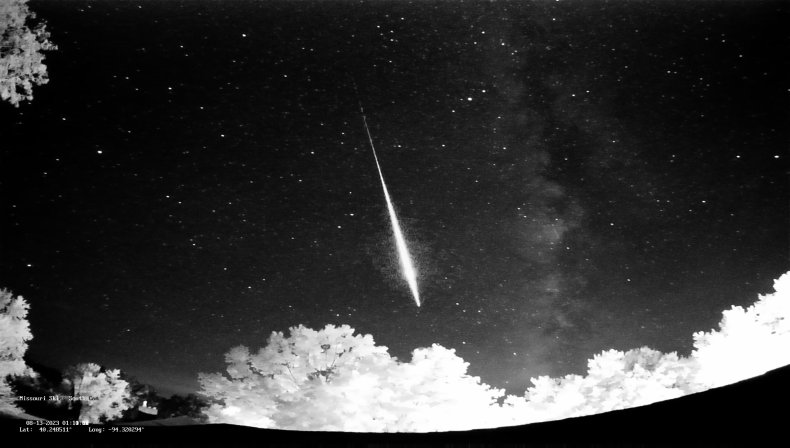The annual Perseid meteor shower peaked late on Saturday night, with many stargazers and photographers flocking to watch the spectacular show.
The shower hit its most active at around 4 a.m. ET on Sunday, August 14, with many meteors and searing fireballs being spotted streaking to Earth.
Pictures from astrophotographers around the globe show the majesty of the shower, which occurs once per year as the Earth passes through a plume of dust left in the wake by the comet 109P/Swift-Tuttle.
Radu Mihai Anghel, Povești cu stele
“I did not get an accurate count of fireballs per hour as I had four main cameras recording quadrants of the sky and haven’t done calculations as to totals,” Dan Bush, an astrophotographer from Albany, Missouri, told Newsweek. “On video, I’m guessing that there was at least one per minute although I was clouded out during the peak. I have been an amateur astronomer for over 40 years and I can only say that it was about average for a Perseid meteor shower.”

Dan Bush, Missouri Skies
“In the night, during the peak (Aug 12-13), I saw four fireballs and around 30 meteors,” Radu Anghel, an astrophotographer from Motoseni, Romania, told Newsweek. “Overall, a meteor shower is a show that [no one] should miss!”
The Perseids began on July 17 and will last until August 24, when the Earth finishes passing through the debris of the Swift-Tuttle comet.
This comet orbits the sun once every 133 years, leaving a plume of dust in its path as it’s heated up by the giant star’s radiation, some of which crosses over the Earth’s orbit around the sun. As our planet passes through that patch of space, the minuscule pieces of dust collide with our atmosphere, burning up at high speeds as they fall to Earth.

Radu Mihai Anghel, Povești cu stele
“Meteors or ‘shooting stars’ are the result of small pieces of natural space debris entering the Earth’s atmosphere at high speed—60 km (37 miles) a second in this case—and burning up high in the atmosphere, around 80 km above the ground,” Robert Massey, deputy executive director at the U.K.’s Royal Astronomical Society, told Newsweek last year.
“Fragments of debris slam into the atmosphere, are rapidly destroyed by heat resulting from air resistance, and then the air around them glows momentarily. Dust in this stream is a lot denser than in most of interplanetary space, so instead of a few meteors an hour, we see a lot more.”
The Perseids are so-named due to the location in the sky where the meteors appear to originate, in the constellation of Perseus. This year’s shower was particularly visible due to the new moon, which minimized the light pollution glaring out the meteors.
Do you have a tip on a science story that Newsweek should be covering? Do you have a question about the Perseids? Let us know via [email protected].


